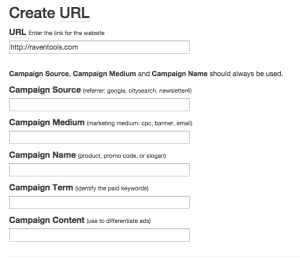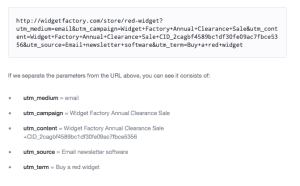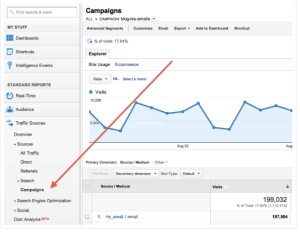blog
Display Advertising that Works: Improving Your IP Targeting with UTM Codes
Attribution.
It’s the holy grail of online marketing, isn’t it? Every online marketing executive works overtime to know how many clicks it takes for that customer to get from your display advertising—whether that be in an email newsletter, in a website banner ad, an online newspaper ad, or a direct mail landing page--to a purchase conversion.
Getting that kind of data may seem impossible, especially if your customers make more than one trip around the digital block before they make up their minds. But it can be done—if you use the right tools. One of the most important tools you can have in your analytics toolbox is the UTM Code.
A UTM Code a simple code that Google Analytics, Omniture, Crazy Egg or just about any other web analytics tool allows you to attach to the end of your custom URL web address that tracks your audience in rather fine-grained detail—down to the source, media and ad campaign name. Note - since Google Analytics is so pervasive in the marketplace, we will use their tool for the examples that follow. With these sources “baked” into your URL address, it then becomes simple for Google Analytics to tell where your searchers came from, as well as what campaign directed them to you.
To build a web address using UTM Codes, simply go to Google’s Analytics’ custom website address builder tool. When you arrive at the site, you will be asked for your existing web address, and to fill out the following fields.

Once your fields are filled in, Google will automatically generate a web address with the appropriate UTM codes filled in. Here’s an example:
Being able to track, then, just becomes a matter of marketing hygiene. Just add a UTM code onto the web address of everything you do. For instance, if you have an E Toro display ad campaign that leads to a landing page online, make sure that your landing page url in the ad shows your web address, but with El Toro and name of your ad campaign noted in your UTM code. Same thing goes with your Facebook and Google display advertising, an online email campaign or any other promotion that is leading your customer to an online destination, which needs IP targeting.
With your website terms now set up and registered with Google Analytics, you can easily check the traffic you are receiving on these links and compare it against other campaigns. Google Analytics makes this easy, offering tabs under campaigns that allow you to search by source, content, medium, and the like.
Clearly, UTM codes are one of the best tools available today for measuring online traffic. It’s a good front line metric.
But I would assert, it is not your most important one. Many in digital marketing circles might label me a heretic, but I believe the “proof” in your marketing campaign is not in your click through rate (CTR). It’s in your sales. And typically the only way to truly measure those is with a match back analysis.
Match back analysis is something that comes standard with every campaign we do at El Toro, and it tells our customers whether or not their campaign has reached your target audience, by measuring how many members of your specific target audience converted to a sale.
For instance, here is an example of a match back analysis report we did comparing Direct Mail and a Banner ad, and comparing the lift El Toro was able to help our client achieve. As you can see, the addition of El Toro to the mix was able to add a 108% percent lift to the response rate—which is a solid argument for IP targeting.
With the tools available to digital marketers today, there’s no reason why your campaign shouldn't be taking advantage of all the benefits UTM codes and match back analysis can bring your company.
For more information on how we can make solutions like these work for you, don’t hesitate to contact us.
Ad Tech | How El Toro Stacks Up to Competitors
Ad tech, in the competitive world of digital marketing, comes in many forms, making it crucial to understand how these tools compare. Not all options are created equal, so knowing the differences is key. At...
Read More
What Rising Streaming Costs Mean for Your Ads
Thanks to rising streaming costs, the Over-The-Top (OTT) streaming services industry continues to shift. Subscription prices have become a thorn for consumers, reshaping their behavior and the industry at large. The rise in subscription costs...
Read More
OTT Publishers Spotlight: Use OTT to Reach Your Customers
Over the last decade, the way we consume media has undergone a major shift, with Over-The-Top (OTT) platforms taking center stage. OTT refers to the delivery of TV, movies, and other video content directly over...
Read More
Defeating Ad Fraud: How to Protect Your Campaigns
In the world of digital advertising, ad fraud is a pervasive challenge, casting shadows over the integrity and effectiveness of online marketing campaigns. As advertisers allocate budgets to digital channels, the prevalence of fraud threatens...
Read More
Ready to Run With the Bull?
Contact Us






